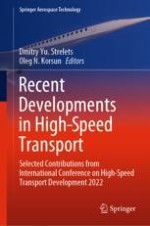This book describes the basic concepts and various aspects of creating a new generation supersonic passenger aircraft. It presents the fundamental and applied problems essential to the design of aircraft of this type. Solutions to the problems of reducing supersonic boom, environmental noise, harmful emissions, increasing the efficiency of propulsion systems, and the general concept and certification are described.
The development of high-speed transport, as a means of improving mobility and quality of life, is a relevant task for research teams in many countries. The publication includes selected articles from the 1st International Conference on High-Speed Transport Development, organized by the Moscow Aviation Institute (National Research University) which, by participating in many research and commercial projects (including international ones) has accumulated a lot of competencies sufficient to act as a platform for knowledge exchange in this field.
The target audience of this book are researchers working on high-speed transport, postgraduate students, as well as any individuals willing to broaden their knowledge of high-speed aircraft.
